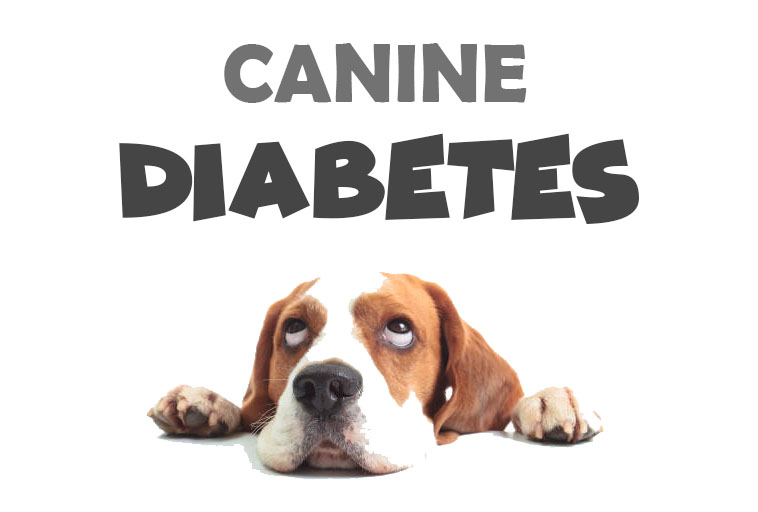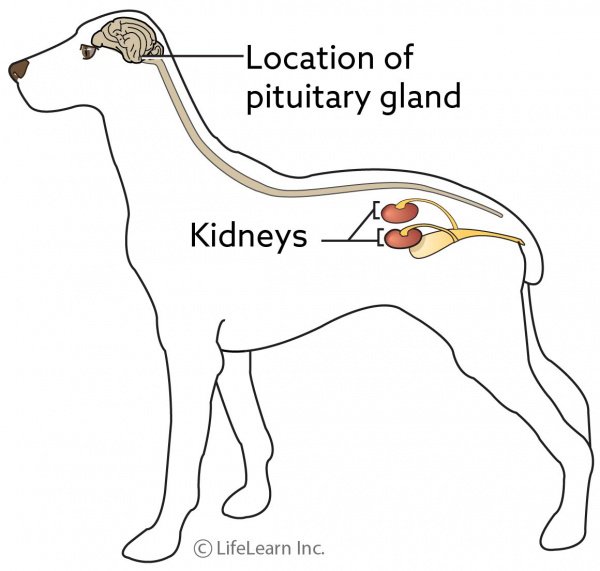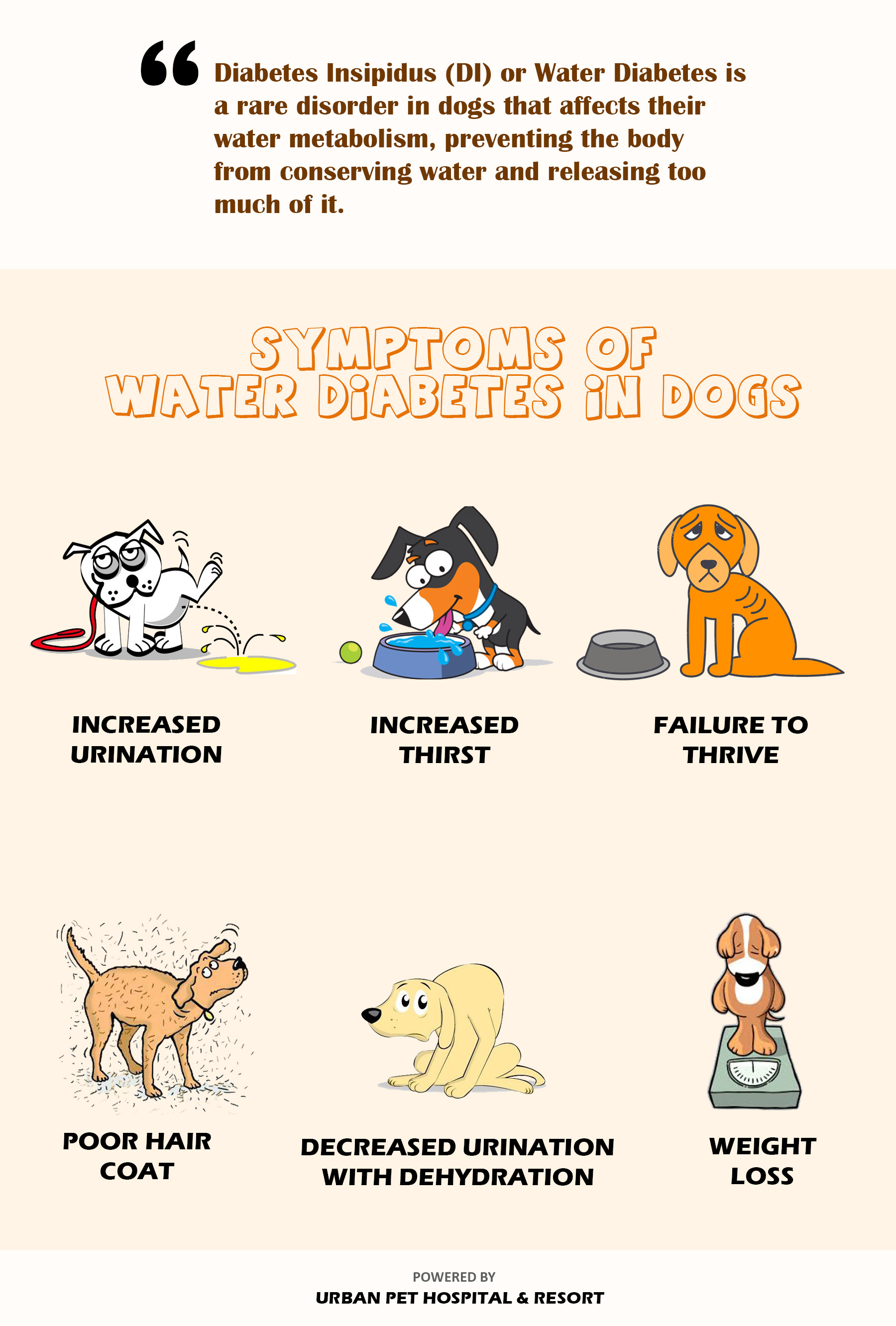A week ago, my Daschund started frequenting loo more often than before and would finish his water bowl instantly. Suddenly, the urination decreased, he started dehydrating and would avoid eating his favorite food.
If you started seeing these signs in your dog, beware because it could be "Canine Diabetes."

Yes, dogs can get diabetes too, and there are tell-tale signs of diabetes your dog may show.
Is Canine Diabetes common?
Dogs can experience two different types of diabetes
- Diabetes Insipidus (Water diabetes)
- Diabetes Mellitus (Sugar Diabetes)
Diabetes mellitus is common in dogs, but only a few dogs ever get diagnosed with water diabetes. So, diabetes isn't a much common phenomenon.
Diabetes Insipidus or water diabetes occurs when their kidney fails to make enough concentrated urine and start passing too much water from their body.
However, Mellitus affects the amount of glucose in their blood when their body fails to make enough insulin.
Just like us humans, dogs can encounter Sugar diabetes, but getting water diabetes is less common.
Don't panic yet. With timely treatment, dogs with water diabetes can live a normal life and enjoy their usual activities.
Here is how you can detect diabetes in dogs and provide timely medical needs to save their life!
What is Water Diabetes, and how does it affect dogs?
Water Diabetes is a rare disorder in dogs that affects their water metabolism, preventing the body from conserving water and releasing too much of it.
When their body fails to produce an adequate amount of the hormone Vasopressin (ADH), it changes the body's hormone levels and starts affecting several areas of the body, particularly the kidneys.
ADH ensures that their kidney can retain the water necessary to keep their body hydrated. Once it fails, they start losing enough fluid to cause dehydration.
Frequently providing fresh water can help subside their symptoms, but it won't treat their illness.
What may cause Water Diabetes in Dogs?
Sometimes the condition is genetic. The other times, underlying medical issues such as kidney problems can also cause diabetes.
The kidney continually filters the blood and maintains the balance of the body's water by excreting or reabsorbing fluid as required. Efficient reabsorption requires an adequate level of ADH hormone in the pituitary gland.
The pituitary gland's dysfunction or inadequate production of ADH may force the kidney to resist the hormone. And, without proper hormonal level, their kidney will start excreting too much water from the body.

Sometimes, congenital disabilities, brain trauma, or a tumor in the pituitary gland can cause inadequate production of ADH.
In rare cases, metabolic disorders, renal insensitivity, and renal diseases ( Pyelonephritis and Pyometra) can also cause water diabetes in dogs.
Types of Water Diabetes in Dogs
Different diabetes may affect dogs in different ways.
First of all, you should determine if the condition is Neurogenic or Nephrogenic.
|
NEUROGENIC DIABETES
|
NEPHROGENIC DIABETES
|
|
Neurogenic Diabetes or Central diabetes insipidus is caused by the lack of the hormone vasopressin.
More specifically, the hypothalamus in their brain that controls the production and regulation of vasopressin gets affected.
There are many causes for this; head injury, brain tumor development, or failure in the hypothalamus or pituitary gland.
|
Nephrogenic diabetes occurs due to the deficiency of ADH or Antidiuretic hormone that stimulates the capillary muscles and regulates urine flow.
The inability to respond appropriately to ADH makes their body pass too much water through urination.
The acquired condition is due to amyloidosis of the kidney, kidney cysts, or an imbalance of electrolytes.
|
However, water diabetes is a rare condition and only affects few dogs. In some dogs, water diabetes is a genetically inherited condition.
What are the Symptoms of Water Diabetes in Dogs?
There isn't a single symptom of water diabetes. Depending on the severity, your dog may show different signs.
Some common clinical signs of water diabetes in dogs include:
- Frequent urination (polyuria)
- Increased drinking (polydipsia)
- Decreased urination with dehydration
- Passing of pale-colored urine every 15 to 20 minutes
- Fatigue and tiredness
- Lack of appetite
- Poor hair coat
- Weight loss
- Incontinence issues
Many of these symptoms correlate with other canine illnesses as Urinary Tract Infection (UTI) and Urinary Stones.

Hence, you shouldn't start assuming that your dog is suffering from water diabetes.
The only way to confirm water diabetes in your dog is through a proper diagnosis made by an experienced veterinarian.
Diagnosing Water Diabetes in Dogs
Your veterinarian will run a few tests on your dog to diagnose water diabetes.
- They will perform a complete physical exam on your dog, including:
- Blood chemical profile
- A complete blood count
- Urinalysis
- An electrolyte panel
- They may ask you a series of questions, including your dog's medical history, to determine its state of health.
- A critical diagnosis test includes testing Plasma ADH levels to differentiate between neurogenic or nephrogenic diabetes insipidus.
- Other forms of diagnostics include magnetic resonance imaging (MRI) or computed tomography (CT) to locate pituitary tumors or kidney disorders.
Suppose the above tests aren't conclusive or need further examination. In that case, they will follow a modified water deprivation test or an ADH supplementation trial to check for body water loss.
Sometimes, the underlying medical condition may cause water diabetes, such as uterine or kidney infection. Examining for the underlying problem will likely be part of their diagnostic process.
Bear with them because detecting water diabetes and the exact cause can sometimes be challenging.
By identifying the exact cause and type of diabetes, your veterinarian in Urbandale will provide appropriate solutions.
Treatment of Water Diabetes
There are several different treatments available to Effectively treating water diabetes in dogs.
- Your dog may need hospitalization to test for a modified water deprivation for diagnosing any two of the Diabetes Insipidus.
- An ADH trial follows if the cause is neurogenic, which is generally treated with vasopressin injections.
- Several synthetic ADH substitutes are available. Some of these are administered by injection or as pills (Hydrochlorothiazide).
- Few may be administered as drops into the eyes or nose. Desmopressin (also known as DDAVP) is applied either as eye drops or injected under the skin.
- Polyuria may be controlled using desmopressin acetate, a synthetic analogue of ADH.
- Weaning the pet onto a sodium-restricted diet may also be part of the recommended therapy for water diabetes.
- If you may elect not to treat diabetes, you should ensure to provide your dog with unrestricted access to water at all times. Water deprivation can easily lead to stupor, coma, and death.

Ensure to condition your home environment and daily routine to provide them with easy access to urine ground. Adding doggie doors or frequently taking them outside will also help with frequent urination.
Conclusion
Water diabetes is an incurable disease, but you can keep it at bay with timely medical attention and the correct lifestyle.
With medication, the disease can go to remission, which means your dog will stop showing signs of diabetes.
Get in touch with Urban Pet Hospital & Resort, the best pet hospital in Des Moines, to talk more about water diabetes in dogs and how to prevent them.